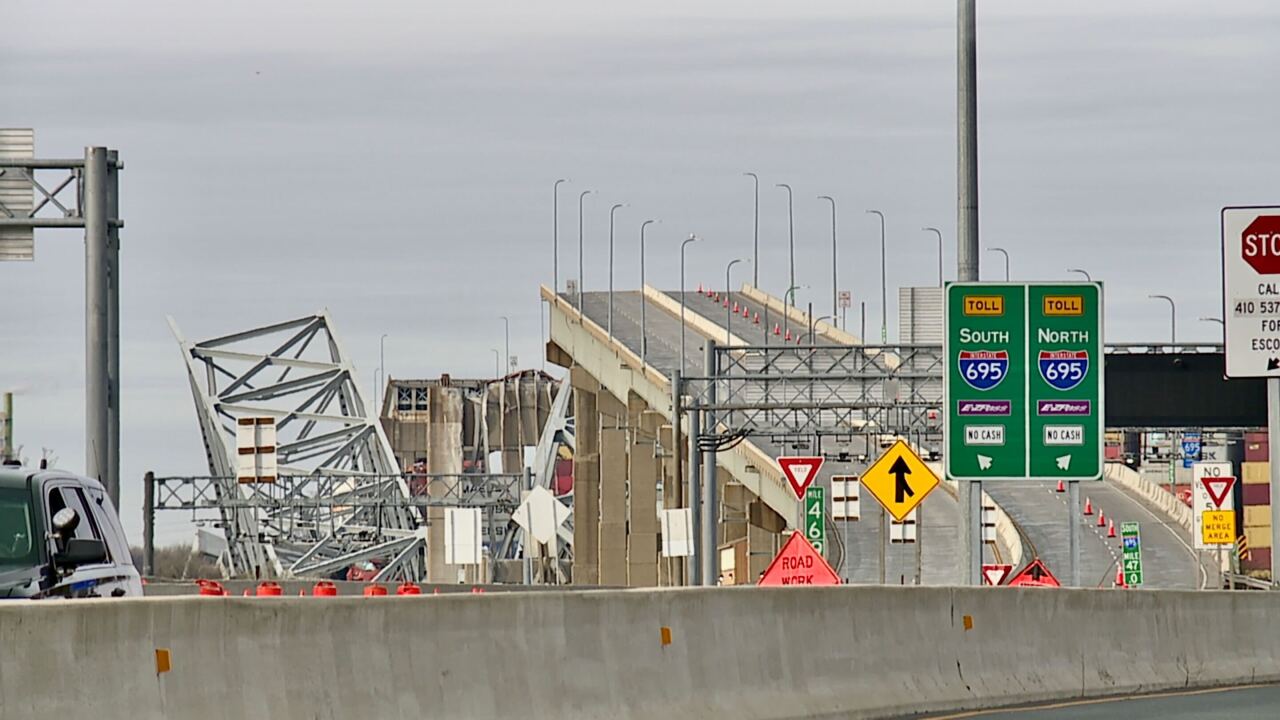BALTIMORE — We don't have to get used to this - sitting bumper to bumper at rush hour every day, competing with the thousands of other drivers, who used to take the Key Bridge, trying to get home.
"We're gonna be dealing with problems for more than a couple years, but we should be dealing with solutions right now," Mike Galiazzo, head of the Regional Manufacturing Institute of Maryland (RMI), said.
As a representative for the manufacturing industry, Galiazzo has a stake in the game. But he says - almost everyone in the Baltimore area does too.
"Kids going to school, moms dropping off kids, bus drivers, emergency vehicles trying to get to the hospital. All of those are gonna be impacted."
We initially reached out to Galiazzo to ask how the Port of Baltimore closure was impacting manufacturers. But he told us - there's a bigger issue here we should be talking about.
"The port part of this will affect those manufacturers who regularly need imports from the port - companies like U.S. Gypsom or Domino. But there's many manufacturing companies that don't use the port. They all use the road system," he said.
And, they're all concerned about their employees getting to and from work. If they're stuck in traffic every day for the next few years, maybe they'll start looking for another job. Galiazzo says the manufacturing industry can't afford that; it's already stretched thin.
"So just during normal times, we don't have enough people. If people have trouble getting to work, it's gonna kill some companies, it really will," Galiazzo said.
It'll take years to build a new bridge. So Galiazzo is focusing on solutions to ease the pain. A technology he learned about recently came to mind: quantum computing.
"I'm not an expert. I just read up. I'm just an average guy that just read up," he said.
So, we found an expert.
"Quantum computers have been in development for decades and at D-Wave we've been building quantum computing technology for 25 years and I think people are really excited to hear that in the last few years they've been used increasingly to optimize logistics and supply chain management and transportation challenges," Murray Thom, Vice President of Quantum Technology Evangelism, said.
Just as the name suggests, quantum computers use quantum mechanics to solve complex problems faster than classical computers can, and much faster than humans could. Thom says both the government and individual companies could harness the technology's power to improve efficiency for drivers.
"You could imagine a solution where someone who would be looking to coordinate the movement of hazmat trucks would basically say, 'Ok I have this much material that needs to leave and go to these various destinations, I have this many trucks, so I want you to make a plan that actually distributes those so that the overall load on the city infrastructure is minimized," Thom explained.
The state is in fact considering this as a viable option. Maryland Department of Transportation Secretary Paul Wiedefeld said all the relevant agencies are taking a look at quantum computing solutions right now.
"We just want to make sure there's other ways we can think about the movement of goods and people around the port, particularly with the rebuild obviously taking years, we just want to make sure we're exploring everything. So that's what we're doing right now."
Secretary Wiedefeld stopped short of saying exactly how many years the rebuild is expected to take, but he did confirm it would be a different design, rather than a truss-style bridge.




